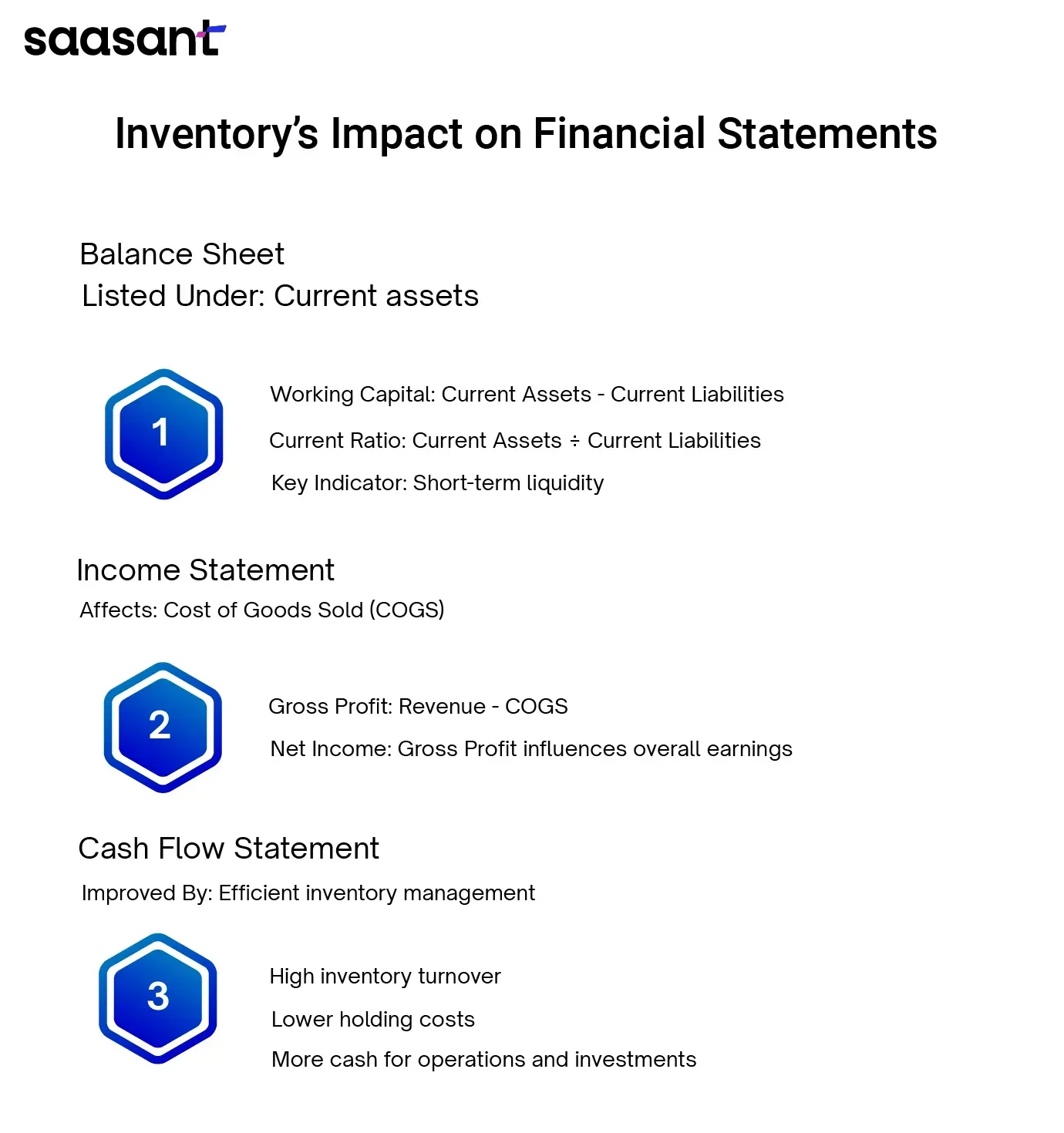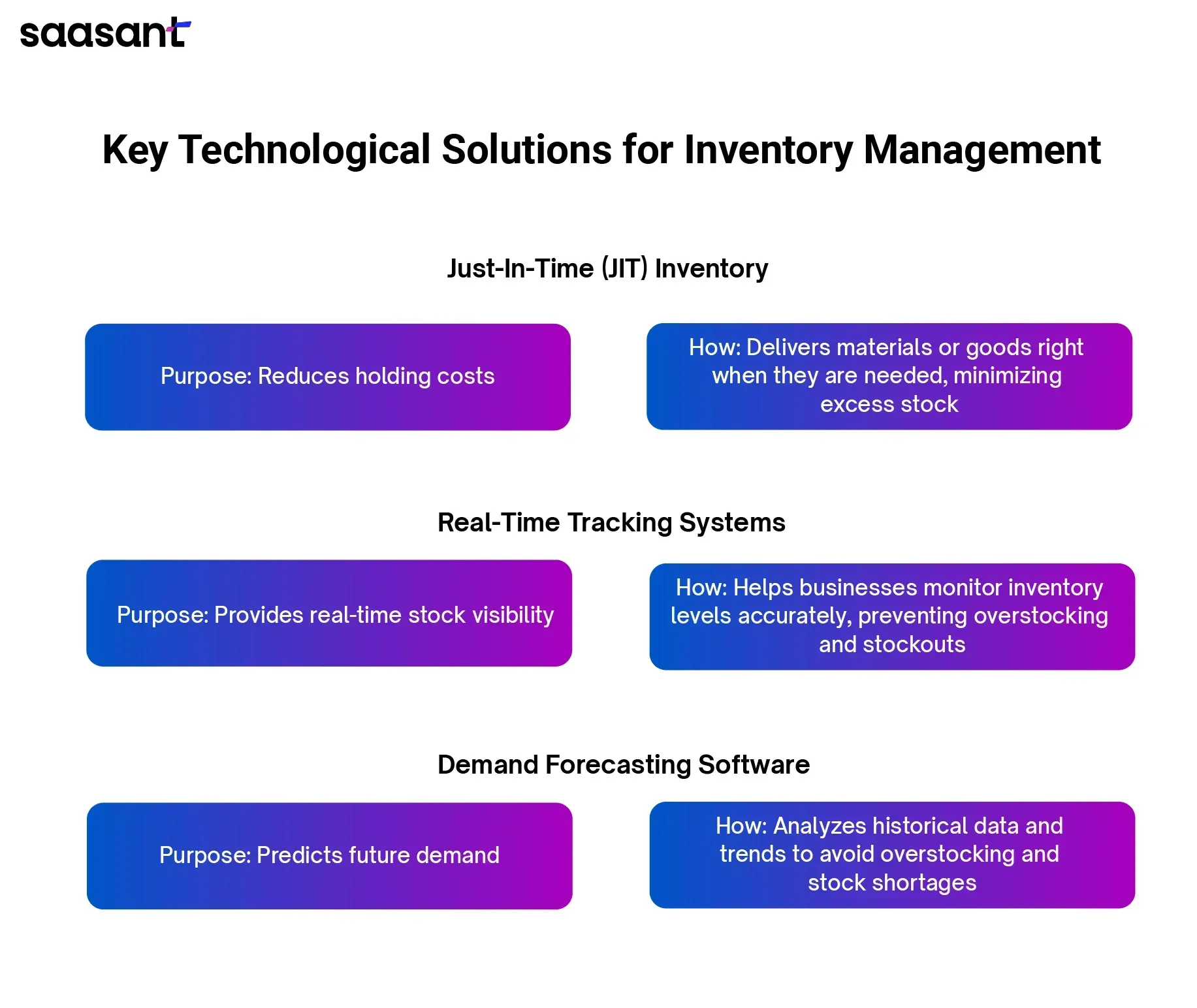Is Inventory a Current Asset? A Complete Guide
 For any business, inventory plays a crucial role in ensuring smooth operations. Whether you're holding raw materials, work-in-progress, or finished goods, your inventory directly influences cash flow, liquidity, and profitability. But where does it stand on a company's financial statements? More importantly, is inventory considered a current asset?
For any business, inventory plays a crucial role in ensuring smooth operations. Whether you're holding raw materials, work-in-progress, or finished goods, your inventory directly influences cash flow, liquidity, and profitability. But where does it stand on a company's financial statements? More importantly, is inventory considered a current asset?
In this blog, we'll explore the classification of inventory as a current asset, its broader financial implications, and why efficient inventory management is key to business success.
Contents
Defining Current Assets: Where Inventory Fits In
Inventory in Different Industries: More Than Just Goods
Why Is Inventory Classified as a Current Asset?
The Impact of Inventory on Financial Statements
Common Inventory Management Challenges
Leveraging Technology for Efficient Inventory Management
Conclusion
FAQs
Defining Current Assets: Where Inventory Fits In
Current assets are short-term resources a company expects to convert into cash or use up within one year or the operating cycle (whichever is longer). This category includes assets like cash, accounts receivable, and prepaid expenses, and it is listed on the company’s balance sheet as an indicator of short-term liquidity.
Inventory fits into this category as long as it is expected to be sold or converted into cash within one operating cycle. The operating cycle is the time it takes for a company to convert raw materials into finished products, sell them, and collect payment.
Examples of Current Assets:
Cash and cash equivalents: The most liquid asset.
Accounts receivable: Amounts owed by customers.
Inventory: Goods a company holds for sale or use in production.
Inventory, a significant part of current assets, represents different things depending on the industry. It may consist of:
Raw materials: Resources used in production (standard in manufacturing).
Work-in-progress: Partially finished goods.
Finished goods: Completed products ready for sale (standard in retail).
The classification of inventory as a current asset means it can be quickly liquidated into cash, making it a vital part of a company’s short-term financial health.
Inventory in Different Industries: More Than Just Goods
Every industry has its unique relationship with inventory. In manufacturing, inventory ranges from raw materials to finished products. Retailers mainly deal with finished goods, while service-based industries may have minimal inventory, primarily in supplies and equipment necessary for their operations. Each type requires specific management and valuation techniques to accurately reflect its current asset value.
For instance, in a manufacturing company, raw materials are purchased, processed into work-in-progress, and turned into finished goods. On the other hand, retailers stock finished goods ready for sale, and service-based businesses may have limited inventory in the form of tools, supplies, or equipment. Despite these differences, inventory management and its classification as a current asset are crucial across sectors.
Why Is Inventory Classified as a Current Asset?
For inventory to be classified as a current asset, it must be expected to be sold or used up within the operating cycle or one year, whichever is longer. This concept aligns with the inventory turnover ratio, a key metric in determining how fast a company can convert its inventory into sales.
The inventory turnover ratio calculates the number of times inventory is sold or used in a given period. A high ratio indicates that the business efficiently manages inventory, converting it quickly into sales and cash. Conversely, a low turnover ratio may suggest that inventory is piling up, leading to liquidity concerns, possible obsolescence, or increased storage costs.
The Impact of Inventory on Financial Statements
Inventory plays a significant role in a company’s financial health. It directly affects various financial metrics, which are crucial for stakeholders to evaluate the company’s performance:

Balance Sheet: Inventory is listed under current assets, contributing to working capital (the difference between current assets and current liabilities) and current ratio (current assets divided by current liabilities), both key indicators of a company’s ability to meet short-term obligations.
Income Statement: Inventory influences the cost of goods sold (COGS), subtracted from revenue to determine gross profit. By affecting gross profit, inventory valuation also impacts net income.
Cash Flow: Efficient inventory management helps improve cash flow. A company with high turnover and low holding costs will have more cash for other operations or investments.
Investors, creditors, and other stakeholders closely examine these financial ratios and metrics to gauge a company’s financial health and operational efficiency. A company that effectively manages inventory as a current asset will often outperform those that do not.
Common Inventory Management Challenges
Inventory management isn’t just about keeping track of goods but optimizing resources. Mismanagement can lead to several issues:
Excess inventory ties up cash and can increase storage costs and obsolescence.
Understocking can result in missed sales opportunities, customer dissatisfaction, and strained supplier relationships.
Different inventory valuation methods can also complicate matters:
First-in-first-out (FIFO) assumes that the first items added to inventory are the first sold, which can be beneficial when prices rise.
Last-in-first-out (LIFO) assumes the opposite, where the most recent items are sold first. This can be useful for reducing taxable income in times of inflation.
Each method impacts the financial statements differently, so businesses must choose the one that aligns with their operational goals and regulatory requirements.
Leveraging Technology for Efficient Inventory Management
In the modern business environment, technology is indispensable for managing inventory effectively. Modern inventory management software and tools, such as barcoding systems and real-time inventory tracking, allow businesses to monitor their inventory levels accurately and in real time. These tools help optimize inventory turnover and reduce carrying costs.
Critical Technological Solutions for Inventory Management:

Just-In-Time (JIT) Inventory: Reduces the cost of holding excess inventory by delivering materials or goods as close as possible to when they are needed.
Real-Time Tracking Systems: These systems give businesses real-time visibility into stock levels, ensuring they can meet demand while minimizing excess inventory.
Demand Forecasting Software: Uses historical data and analytics to predict future demand, helping businesses avoid overstocking or stockouts.
By embracing these tools, companies can improve operational efficiency, reduce costs, and enhance customer satisfaction, which directly impact their financial performance.
Conclusion
Understanding inventory as a current asset is more than just a classification on the balance sheet—it’s a critical factor in determining a company’s liquidity, profitability, and overall operational efficiency. By mastering inventory management, businesses can better forecast demand, reduce unnecessary holding costs, and improve their financial health. Furthermore, adopting modern inventory technologies can streamline processes, leading to better resource utilization and a stronger competitive position in the market.
Optimizing inventory management is not just an option—it's a necessity for any business aiming to thrive in today’s economy.
FAQs
Is inventory always classified as a current asset?
Yes, as long as it is expected to be sold or converted into cash within one year or the operating cycle.
How does inventory affect cash flow?
Efficient inventory management improves cash flow by converting stock into sales quickly, reducing holding costs.
What’s the difference between FIFO and LIFO?
FIFO sells the oldest inventory first, while LIFO sells the most recent inventory first. Each has a different impact on profitability and tax implications.
How does inventory impact a company's profitability?
Inventory affects profitability through the cost of goods sold (COGS). Managing inventory efficiently can help lower COGS, leading to higher gross profit. However, excess or obsolete inventory can increase storage costs and reduce profitability.
What is inventory turnover, and why is it important?
Inventory turnover measures how quickly a company sells its inventory over a specific period. A high turnover rate indicates efficient inventory management, while a low turnover rate may suggest overstocking or slow sales, potentially tying up cash and lowering liquidity.
Can service-based businesses have inventory?
Yes, service-based businesses may have inventory, though it’s typically minimal compared to manufacturing or retail. This could include tools, supplies, or materials needed to deliver services. Managing these efficiently still impacts cash flow and operational efficiency.
What are the risks of holding too much inventory?
Holding too much inventory can lead to cash flow issues, increased storage costs, and the risk of inventory becoming obsolete or damaged. Excess inventory can also indicate poor forecasting, reducing profitability and liquidity concerns.